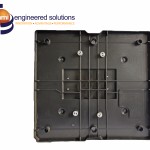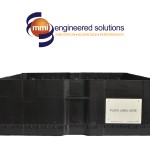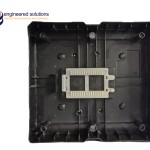Trays
Improve your product quality
Reduce your manufacturing and shipping costs
We have over 40 years of design and manufacturing experience with custom thermoplastic, injection molded product material handling trays.
Our engineers and designers are your resource for tray/container design and will work up front with your product engineers to develop the most efficient total solution.
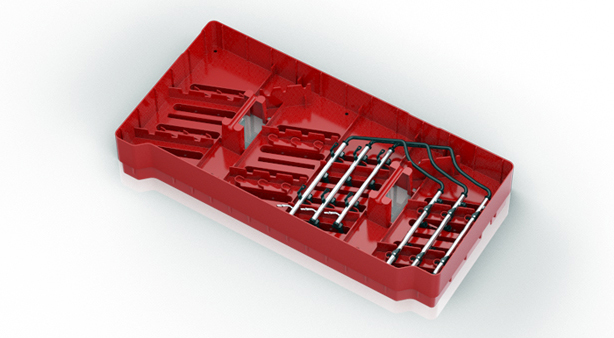
Fuel Rail
Problem:
Contain multiple fuel rail configurations for shipment, they are located in uniform positions without touching fuel injectors or connectors on the fuel rail and the tray allows access for manual loading and unloading.Solution:
Injection mold tray, 1/4 and 1/2 size for use on 45″ x 48″ pallet, tray has full sides and full bottom skin and standard bottom edge stacking. The fuel rails are nested together and indexed to maximize part density and are cradled on both ends of the right side and left side rail. The rails are held down with ribs on the bottom side of the tray when stacked. The fuel injectors are isolated in individual pockets for protection.Benefit:
Fuel injectors, connectors, and wires are contained to protect them from damage and contaminants during loading, unloading, and shipment. Fuel rails are nested together and located on narrow pockets, which allows for very good pack density. The tray is light weight, less than 12 lbs for manual handling, is washable, and can be molded in colors for unique identification.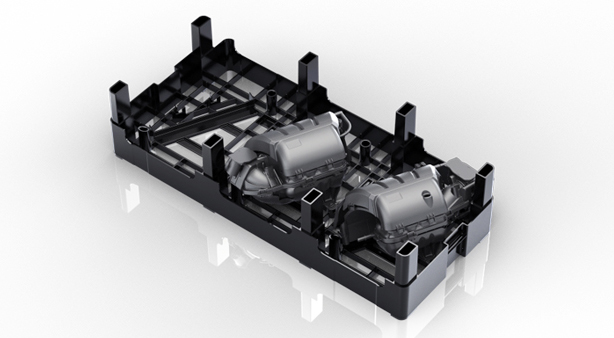
Manifold Tray
Problem:
Contain multiple manifold configurations for shipment, manifolds weigh as much as 30 lbs each, they are located in uniform positions without touching A type surfaces or sealing surfaces on the manifolds, and tray allows access for a lift assist for loading and unloading.Solution:
Injection mold tray, 1/2 size for use on 45″ x 48″ pallet, tray has partial sides and gridded bottom skin and stacking posts for lighter tray weight, and 180° nesting for empty return. The manifold is held with the sealing face down, and TPU pads are attached to the bottom of the tray to hold down the manifolds.Benefit:
Tray and TPU hold downs protect mounting faces and top A surface from damage and debris. Tray is light weight, less than 20 lbs for manual handling, washable, and can be molded in colors for unique identification.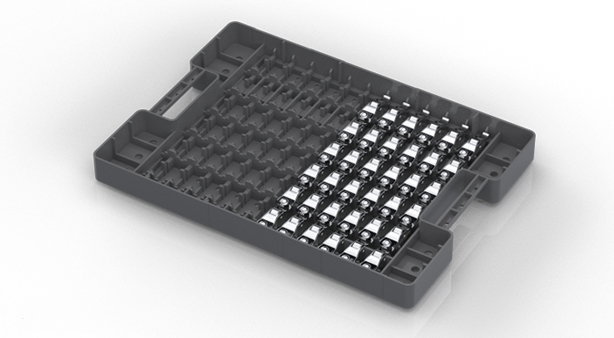
Rocker Arm Component Tray
Problem:
Tight tolerances for shipping/processing trays were needed for robotic operation.Solution:
We designed a new tray with ergonomic handles for manual handling at the supplier’s plant, as well as locating holes for the “shot pins” in the client’s automated equipment. Material selection allowed the trays to be molded.Benefit:
The robot is able to pick up 6 components consistently due to the precise orientation and dimensions of the trays. Parts can be shipping and processed in the tray.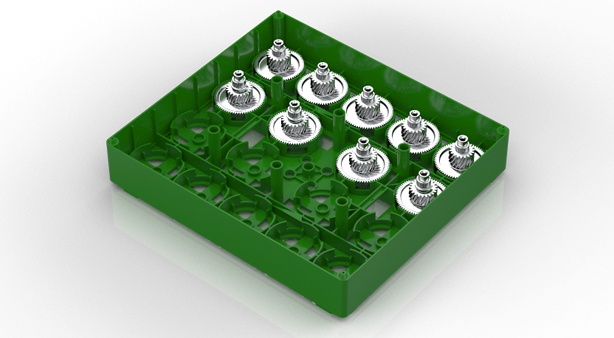
Gear Tray
Problem:
Fears must ship without scratching machined surfaces or abrading the tray.Solution:
We engineered a new tray with snap-in urethane pads, allow gears to nest eliminating scratching during transport. This also eliminated contamination due to the gears shaving the insides of trays.Benefit:
Eliminated corrugated/disposable packaging, custom handling arm tooling, and improved ergonomic handling of gears. The new design saved thousands of dollars by eliminating the disposable/corrugated packaging as well as the need for specialized gripper tooling. An additional benefit was improved ergonomics of handling the gears.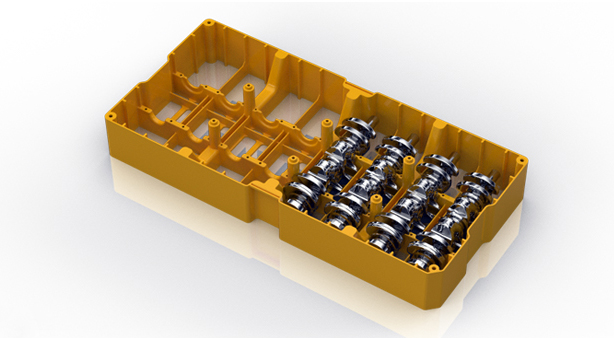
Crankshaft Tray
Problem:
Contained multiple crankshaft configurations for shipment, crankshafts weighing as much as 50 lbs each crankshafts are located in uniform positions without touching precision machined surfaces on the crankshafts, tray prevents damage to the target-ring, and allows access for a lift assist or j-hook for loading and unloading.Solution:
Injection mold tray, 1/2 size for use on 45″ x 48″ steel pallet, tray has full sides with tapered stacking locators,and gridded bottom for lighter tray weight. For trays that handle castings, the crankshaft is located on a main pin near each end and located on two counterweights to force par orientation. For trays that handle finished crankshafts, the crankshaft is located on counterweights only with soft TPU inserts.Benefit:
Tray protects crankshafts from damage and debris and ensures part quality. Tray is light weight, less than 20 lbs for manual handling, convertible to contain future part versions, trays are washable, and can be molded in colors for unique identification.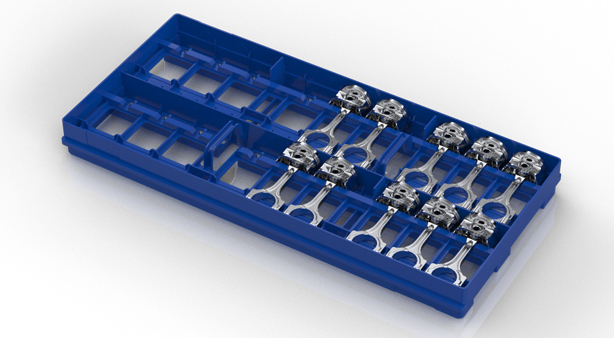
Piston Tray
Problem:
Compressor piston trays had a replacement cost that was too high. The original cast urethane trays had wire mesh and steel supports attached to the bottom. The tray was machined to tolerance.Solution:
Trays were redesigned to reduce cost. The tray was redesigned using thermoplastic polypropylene eliminating the wire mesh, steel supports, and machining.Benefit:
Total customer savings exceeded $35,000 for he program. Cost was dramatically reduced with seamless integration. The cost per tray was reduced from $90 each to less than $20 each. Additionally, the new trays fully interfaced with the equipment and stacked/stored within the existing storage trays.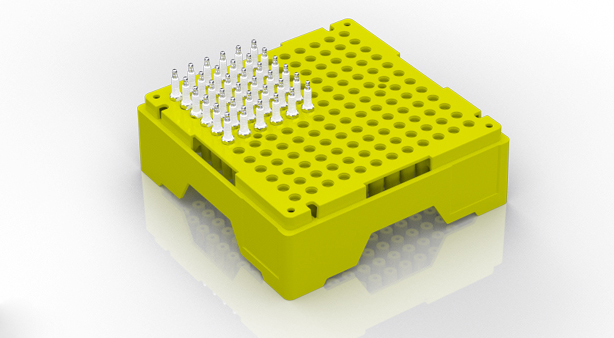
Spark Plug Tray
Problem:
A major spark plug manufacturer needed new returnable containers that could interface with state of the art sorting and assembly automation without errors and safely carry multiple variations of spark plugs.Solution:
A newly designed tray, built with “adaptive tooling” provided the necessary communication so the automation could decipher which parts the tray contained all from the same tool.Benefit:
The manufacturer reduced overall costs by 60% by using a common returnable container with a custom insert for all spark plugs. Assembly and sorting errors were reduced by 90%.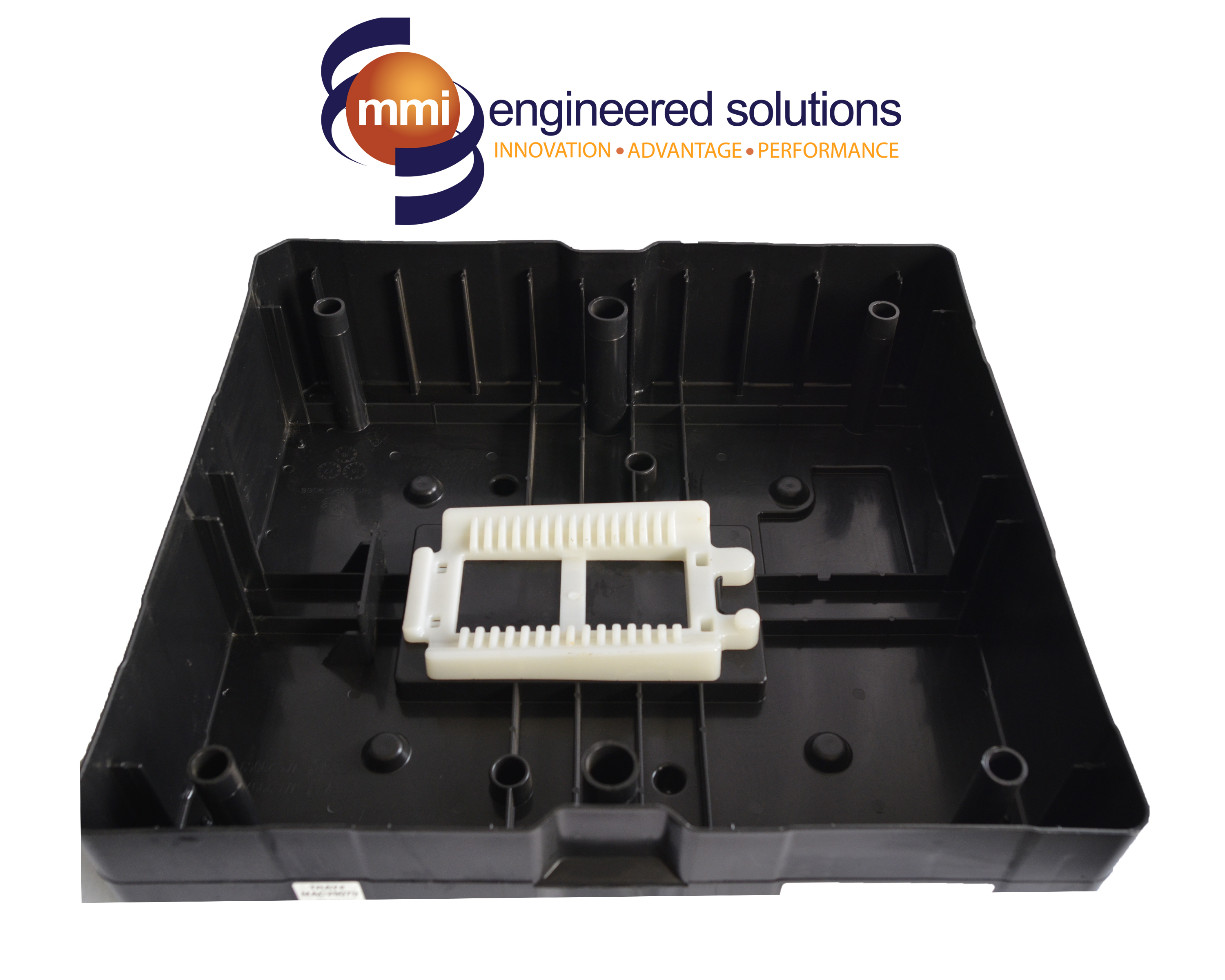
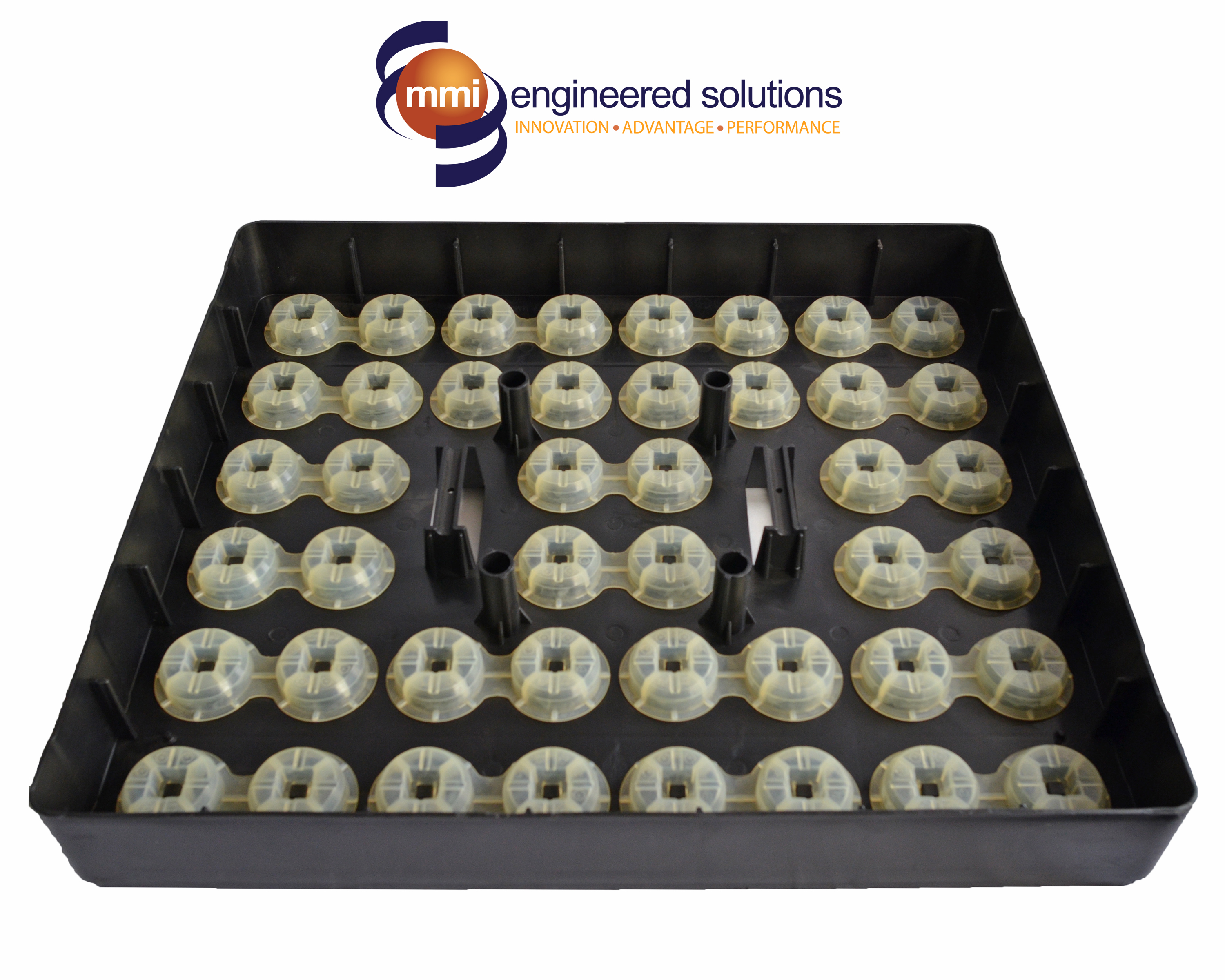
Hub Tray
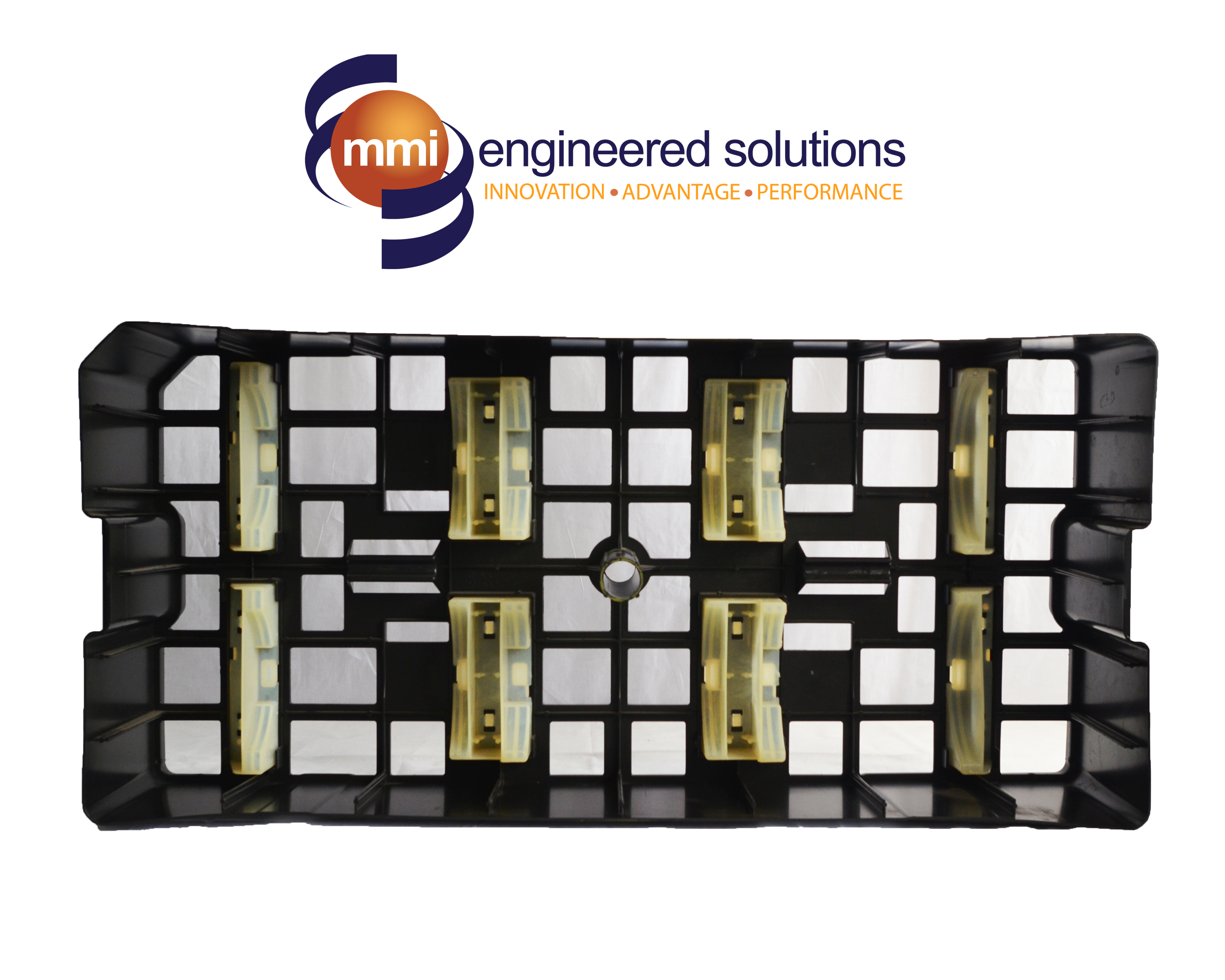
Cylinder Tray
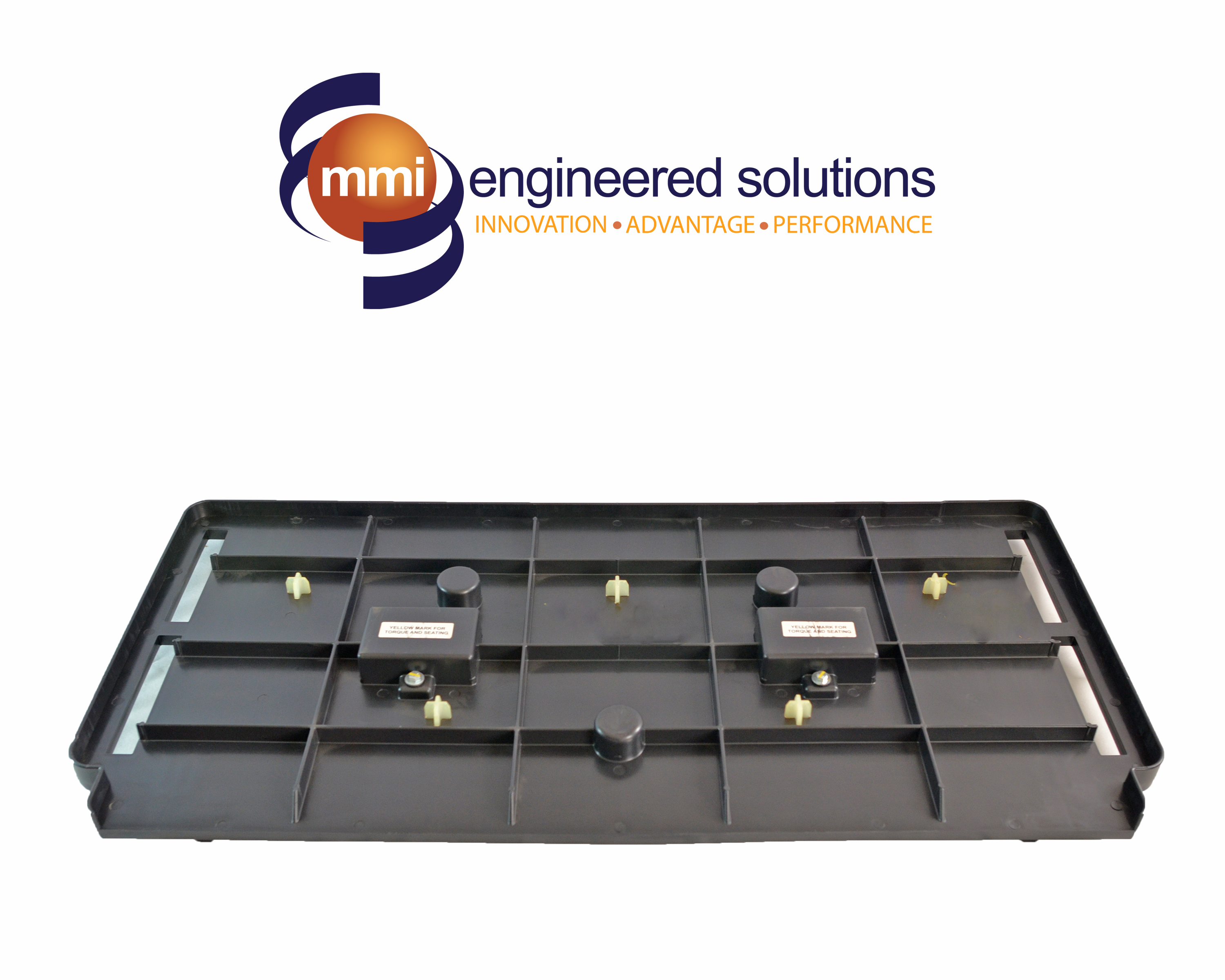
Front Cover Lid
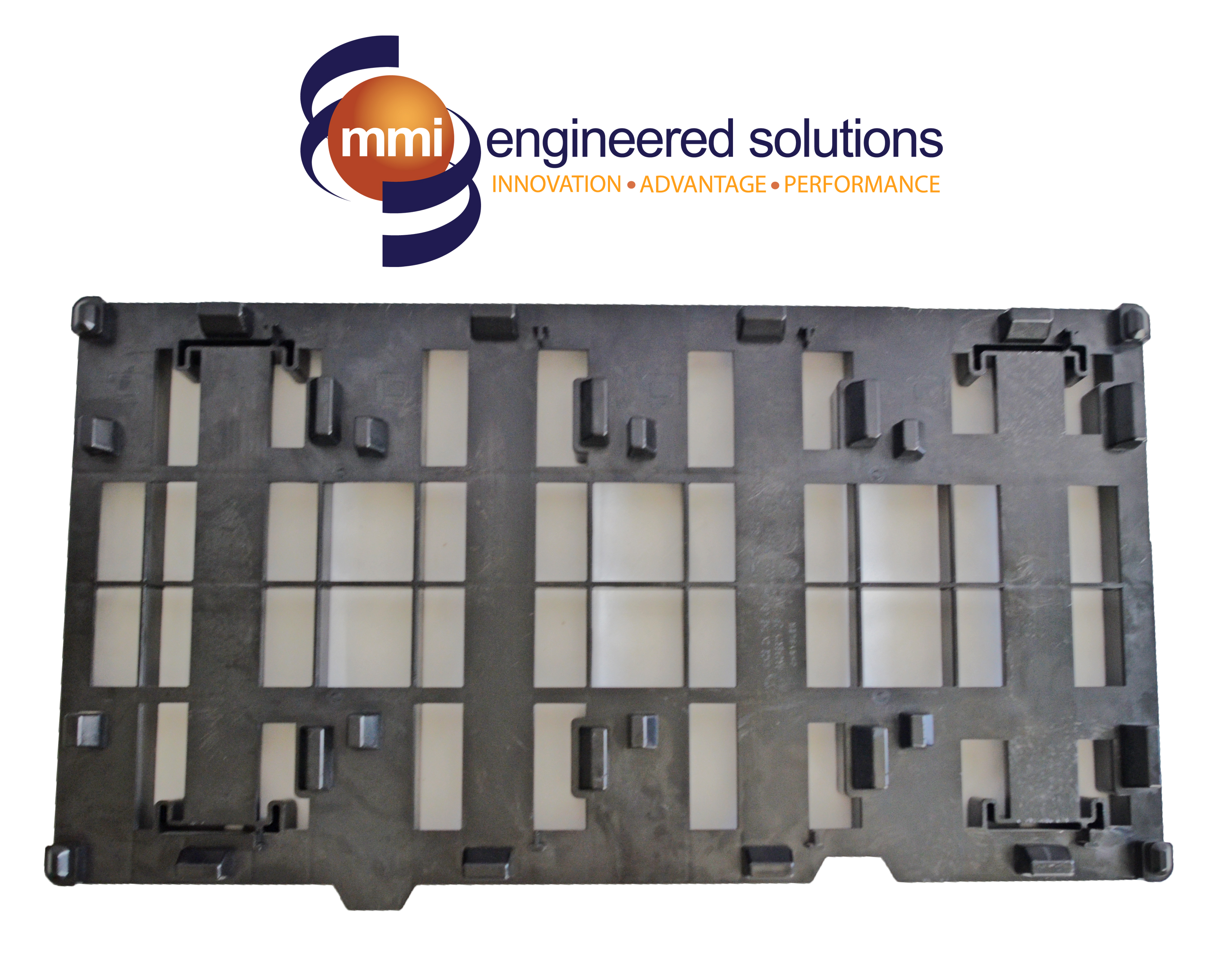
Cylinder Head Tray


